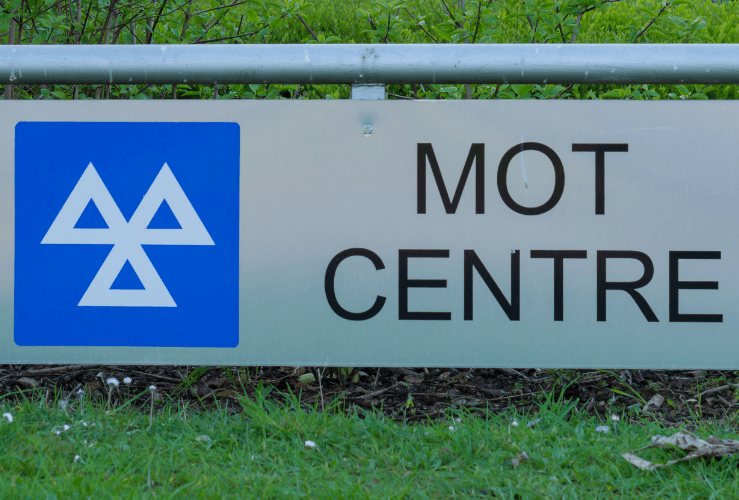Key Highlights:
- Historic vehicle tax exemption and vehicle tax exemption are not automatic. You must apply via a Post Office and update your logbook.
- To qualify as a classic vehicle under the historic vehicle tax exemption, your car must be over 40 years old (built before 1 January 1985) and meet certain criteria.
- Historic car MOT rules allow exemption from MOT if no “substantial changes” were made in the past 30 years under classic vehicles MOT guidance.
- Even if your car becomes tax-exempt, it must remain roadworthy; failure to maintain it can incur fines.
- Keep all documentation (V5C, MOT history or V112 form) and check eligibility annually.
Thinking of getting a classic car?
No classic car owner runs their vehicle for financial gain. Classic car ownership is a road that’s potholed with heartache and pain, alongside the inevitable wallet-emptying visits to a garage or motor factors.
In fact, that’s an optimistic assessment. Visiting a garage or parts outlet assumes the part required is still available! Finding an alternator for a 1980 Citroen GS is not a five-minute (or £50) task.
One saving grace of owning a historic car, is that it may be exempt from VED.

What is VED?
Vehicle Excise Duty (VED), often called ‘road tax’, is simply a government charge for the right to drive on public highways.
Vehicle Excise Duty charge vary according to vehicle, age, environmental impact and fuel type.
Is my classic car exempt from VED?
Owners of ‘historic’ vehicles (over 40 years old) can benefit from VED exemption.
As the government states at https://www.gov.uk/historic-vehicles:
“If your vehicle was built before 1st January 1982, you can stop paying vehicle tax from 1st April 2022. If your vehicle was registered before 8th January 1982, you do not need to pay vehicle tax from 1st April 2022.”
This means owners of vehicles up to the old suffix of X-registered (August 1981) and some Y-registered vehicles are VED-exempt, saving up to £295 a year.
Let’s take the example of an 3-litre Ford Granada Coupe, registered in 1977 (R-registration). It’s over 1549cc, and therefore falls into the higher-rate tax band – or would do, if it weren’t considered ‘historic’. A smaller 1981 (X-registered) Mk1 Ford Fiesta 1.1 saves £180, on account of it falling into the sub-1549cc bracket.
Do tax exemptions apply to any other historic vehicles?
As explained above, if your vehicle was built before 1st January 1982, you can stop paying vehicle tax from 1st April 2022. If your vehicle was registered before 8th January 1982, you do not need to pay vehicle tax from 1st April 2022.
This means, that asides from historical cars, it is possible to apply for other historical vehicles to be made exempt from VED, including:
- Vans
- Motorcycles
- Tricycles
What about large vehicles, buses and specialist vehicles?
You can also apply for the following vehicles to be made exempt from needing to pay vehicle tax:
- Private heavy goods vehicles (HGVs) - they cannot be designed or adapted for transporting goods, or be used for driver training
- Buses used for voluntary or community purposes
- Mobile cranes and pumps
- Road rollers, works trucks and digging machines
- Agricultural machines and mowing machines
- Snowploughs and gritting vehicles
- Electric vehicles
- Steam vehicles

Are all historic vehicles exempt from VED?
No, some historic vehicles will still be required to be taxed, even if they are over 40 years of age.
Your vehicle will not be exempt from vehicle tax if:
- It is used for hire or reward (for example, it’s used as a taxi for paying customers)
- It is used commercially for a trade or business
How do I obtain exemption from car tax in mainland UK?
Tax exemption isn’t automatic. To apply:
- Visit a Post Office that handles vehicle tax
- Provide the V5C (logbook) in your name
- Submit your V11 reminder (if you have one)
- Provide a current MOT certificate or proof of historic car MOT rules eligibility (V112) GOV.UK+1
The Post Office forwards your documents to DVLA, who then issue a new V5C marking the historic vehicle tax class.
How do I obtain exemption from car tax in Northern Ireland?
In Northern Ireland, classic car owners also need to show a valid insurance certificate, in addition to the mainland UK paperwork listed above.
What happens while I’m waiting for the paperwork?
Once these documents are presented, the post office will send off the V5 to DVLA.
The DVLA will then issue a replacement V5, together with any VED refund due.
Owners can still use their classic car while waiting for the relevant paperwork.
Do I still need to apply for car tax after the first exemption?
Historic VED exemption needs to be renewed annually using the same post office process described above.
DVLA will send a reminder, but it’s still free to ‘tax’ your historic vehicle.
Can I be fined for driving my historic vehicle without tax?
An £80 fine can be dished out if owners do not apply for tax exemption when their vehicle tax is due.
Of course, it’s common practice to SORN (declare off-road) a historic vehicle, particularly in winter months. This can be done online at https://www.gov.uk/make-a-sorn
What if I’ve lost the V5?
Like keys and socks, V5 documents have a habit of being misplaced. All the more likely if the vehicle is 40+ years old.
Fortunately, it’s possible to apply for a replacement V5.
Owners need the vehicle registration number, the VIN/chassis number and the name and postcode registered on the (lost) logbook.
How much does it cost to replace a lost V5?
The DVLA charges £25 for the replacement of a lost V5 logbook.
A request for a replacement logbook can be made using the Government’s online service: https://get-duplicate-vehicle-log-book.service.gov.uk/

Historic MOT exemptions: Do I require an MOT for my classic car?
What about the MOT test? Surely, it makes sense that older vehicles are more likely to be dilapidated and possibly dangerous to drive?
Well, the government seems to have taken the view that owners of classic and historic vehicles over 40 years old are likely to be looking after them. There is some justification for this; after all any vehicle made before 1982 has to have some serious attention spent on it to stop it rusting into oblivion.
The official line is: “You do not need to get an MOT if the vehicle was built or first registered more than 40 years ago.” Thus both our Ford examples quoted above will be exempt from needing an MOT.
Are there any instances where I would require an MOT for my historic car?
There is, however, some important small print to consider. The MOT exemption only applies if: “no substantial changes have been made to the vehicle in the last 30 years, for example replacing the chassis, body, axles or engine to change the way the vehicle works.”
These caveats could be open to interpretation, but replacing worn, rusty or broken parts ‘like for like’ is within the rules. Upgrading the engine to twice its original output however, would not fall under the remit of these rules, and the authorities would take a dim view of anyone attempting such a dodge.
That said, the classic car scene generally desires originality, which creates a motivation for keeping things standard. Upgrades like electronic ignition or radial tyres wouldn’t be considered ‘substantial changes’ and are often a must-have on classic vehicles anyway.
It’s worth reading the guidance on ‘acceptable’ changes to establish whether your classic car requires an MOT or not.
What are the requirements for Classic Vehicle MOT's in Northern Ireland?
MOT requirements in Northern Ireland are similar, though not identical, so check the advice on NI Direct if unsure.

Is your historic car roadworthy?
Just because a historic classic car may be exempt from the MOT man’s microscope, that doesn’t mean it can be limping about on bald tyres with no brakes. Apart from the danger to yourself and others in such a jalopy, owners can be fined up to £2,500 and get 3 penalty points for using a vehicle in a dangerous condition (of any age).
Do I have to apply for an MOT exemption for my historic car?
Unlike the process for applying for VED exemption for your historic car, there is no requirement to apply for an MOT exemption. However, It’s sensible to be on top of maintenance, and regular checks to the basics will ensure owners don’t fall foul of this requirement.
It’s also possible to submit a 40+ year classic to an MOT, for peace of mind.
Most testers can perform an ‘informal’ MOT check and report what might fail or be classed as an advisory, such that owners can plan for any repairs.
Historic Vehicle Owners’ Best Practices
According to gov.uk, the following applies to all vehicles, not just historical vehicles.
Every time motorists drive, they should check:
Windscreen, windows and mirrors
This isn’t as straightforward as it sounds, particularly in winter. A frosty windscreen needs to be completely cleared, and demisted inside as well.
Owners of classics, particularly convertibles, will testify that water can and does get into the cabin. A working heater is a must, and an aftermarket electric upgrade is a sensible addition.
Also check the windscreen wipers and washers. Wiper blades perish quickly, and old washer fluid can ‘go off’ – not necessarily unsafe, but certainly unpleasant.
Lights
It’s good practice for car owners to regularly check that their brake lights are working.
Don’t forget to also check number plate lights and fog lights, where fitted. If they’re on the car, they need to work.
Brakes
Older cars often have brakes that are less effective than their modern counterparts, so it’s extra-important to ensure they work as well as they can.
Give the pedal a good shove before setting off. If it sinks to the floor, urgent repairs are required.
Check the fluid level in the reservoir and be aware that the fluid should be completely replaced every two years; brake fluid absorbs moisture from the atmosphere, which lowers its boiling point.
Fluid levels
Along with the brake fluid (which may also supply a hydraulic clutch), it should become second nature to check other fluid levels.
Engine oil is the obvious one, but coolant can leak and if the level drops too low there is a risk of overheating. Like all fluids the coolant should be changed regularly.
Older style batteries have individual cell caps which are removable to check the electrolyte level; top up with distilled water only, or consider a modern replacement.
Tyres
Our classic rubber is an expensive commitment, and sometimes older-style tyres are difficult to find. Thus, the temptation is to use ageing tyres ‘as long as they hold air.’
Watch out for the rubber perishing between the sidewall and the tread. The tread needs to be a minimum of 1.6mm, but preferably at least 2mm and worn evenly across the width of the tyre.
Regularly checking tyre pressures helps maintain a suitable contact patch, and ensures the tyres wear evenly.
Be aware that a date code should be present, in the format ‘XXXX’. For instance, 2417 means the tyre was manufactured in the 24th week of 2017. Three-digit tyre codes date from before the year 2000 – think carefully before driving on tyres that are at least 22 years old!
Should replacements be needed, suppliers such as Vintage Tyres and Longstone Tyres can usually supply older-style tyre formats.
Starter classics: Should I look to buy a classic car that is not considered ‘historical’?
The amount of effort and attention demanded by old cars can be off-putting, but there are avenues worth exploring for the ‘classic-curious’.
It would take a brave owner to rely on a classic for day-to-day transport, but the so-called ‘modern classics’ are often at the bottom of their price curve, making them accessible to enthusiasts with a limited budget.
While a twenty-year old car isn’t going to qualify for VED or MOT exemption, it can offer a taste of the joys of owning an older car.
Restoring one can be hugely rewarding, and with older cars a lot of the mechanical work is much simpler than on modern-day vehicles, and well within the scope of a DIY-er.
Parts are usually cheap and plentiful, which is handy because most twenty-year old cars will be needing at least some work. Much of this can be done piecemeal, so a ‘rolling project’ can be enjoyed even while cosmetic work still needs action.
What should I look for when buying a used classic car?
Above all, prospective owners need to go into any purchase ‘eyes wide open’.
Be prepared for rust, bodged repairs and evidence of abuse, and be ready to spend at least the purchase price on repairs, and if not mechanically minded – view the car with someone who is.
Own a classic car? Don’t leave home without cover.
Protect your pride and joy with specialist classic car breakdown assistance.
Last Reviewed: October, 2025




